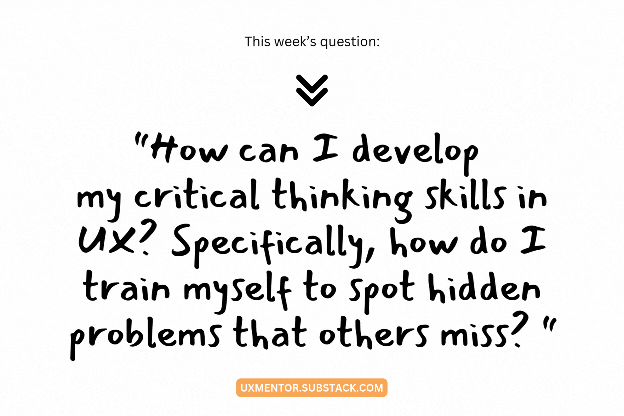💪 How to Turn Critical Thinking Into Your Strongest Design Skill
Stop solving what's obvious and find what MATTERS
👋 Happy Saturday, my dear UX friends, Marina here!
Today, I want to share an interesting question from one of my newest mentees, a question that I believe resonates with many of us, even those with years of experience. She asked me ↴
This thoughtful question got me thinking…
How often do we rush past the questions that really matter?
Critical thinking in UX isn’t about nitpicking or perfectionism, it’s about HAVING A SYSTEM to uncover the insights that will elevate designs (and experiences)
So, here’s my expanded response to help sharpen this essential skill
Moreover, let’s break this down in 6 actionable steps that can guide your thought process and improve your design decisions.
STEP 1.
Separate Assumptions from Truths
The first step in critical thinking is learning to differentiate between assumptions and truths.
Assumptions often go unnoticed because they feel intuitive or are widely accepted.
However, these unverified ideas can derail even the most well-intentioned designs.
For example:
Assumption: “Users will immediately understand this navigation structure.”
Truth (evidence-backed): “In usability tests, 80% of users completed tasks using this navigation without hesitation.”
To clarify your thinking, categorize each design-related statement:
Assumptions: Ideas without direct evidence.
Truths: Statements supported by research, data, or direct observation.
Try this:
Create two columns labeled "Assumptions" and "Truths." For each design element, ask:




